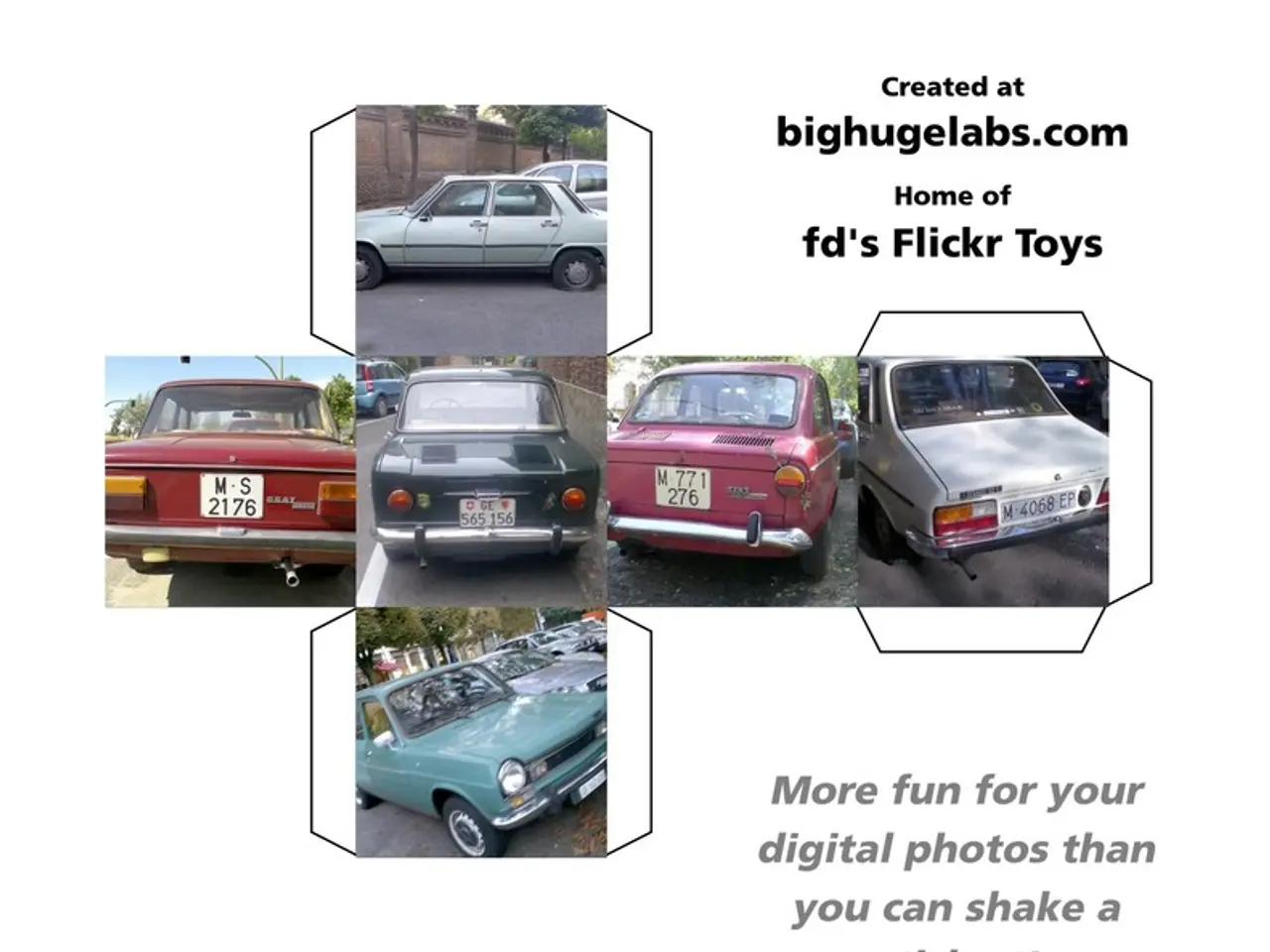Increased Tariffs, Reduced Incentives, and Expensive Luxury Imports Drive Up New Car Prices in April
In the ever-evolving world of automobiles, April 2025 saw a significant shift in the market, with Tesla leading the charge in sales. The American electric vehicle giant sold over 45,000 units, marking its best month of the year, with the refreshed Model Y driving volume.
However, the automotive landscape was not just about sales numbers. According to Cox Automotive's Kelley Blue Book April 2025 new-vehicle prices report, the average transaction price (ATP) surged sharply by 2.5% month-over-month to $48,699. This increase was much larger than typical April rises, which usually hover around 1.1%, and was the second largest in a decade, following April 2020's 2.7% increase.
This spike was primarily driven by tariff talk and the actual implementation of tariffs on imported vehicles, causing both a surge in sales in March and April as buyers anticipated price hikes and a significant decline in dealerships' new-vehicle inventory levels early April compared to prior months and to April 2024.
Despite these tariff pressures pushing prices higher, automakers have absorbed much of the tariff costs through financial losses and not passed all costs immediately to consumers. Nonetheless, many expect prices to rise further as these costs eventually pass through.
The market surged temporarily above typical levels in March-April, averaging 17.5 million seasonally adjusted annual rate (SAAR), but quickly normalized back to mid-15 million SAAR in subsequent months due to high prices and interest rates suppressing demand.
Dealers should expect continued volatility in inventory and pricing as tariff impacts unfold, along with potential softening demand if economic factors do not improve. On the other hand, strong summer sales volume in July was aided by growing incentives, slightly cushioning prices and helping sustain buyer interest despite tariff-related cost pressures.
Tesla's ATP rose to $56,120, while Cybertruck prices remained steep at $89,247 despite a sales slowdown below 2,000 units. The auto loan market is expanding, but so are late payments, as mentioned in a related article.
Overall EV sales saw a nearly 6% decrease month-over-month, but still have a 5.4% increase year-to-date. EV incentives dropped for the second straight month to 11.6%, down from their November 2024 peak of 13.9%. The strength in EV pricing and Tesla's continued dominance may suggest a maturing premium EV segment.
Brands promoting domestic production, such as Ford, can leverage this messaging to their advantage. Electric-vehicle pricing hit a new high in April, with the average EV ATP climbing to $59,255, a 3.7% increase year-over-year. Porsche and Land Rover, import-heavy brands facing tariff-driven price hikes, saw their best sales of 2025 in April, with Porsche's ATP above $114,000 and Land Rover's close behind at $113,000.
Erin Keating, executive analyst at Cox Automotive, states that the cost of new cars has been steadily climbing since President Trump announced auto tariffs 47 days ago. The average ATP for compact SUVs remained stable at $36,416, but incentives dipped to 7.8%, compared to 8.2% in March and a 9.1% average over the past year. However, waning incentives and slowing volume growth raise caution flags for the EV market.
The April data indicates a pricing environment influenced by international trade pressures, consumer urgency, and shrinking incentives for dealers. Dealers heavily reliant on imports are experiencing a pre-tariff sales rush, offering an opportunity to sell high-margin vehicles while demand is high. This increase in April is one of the sharpest in over a decade.
Sports enthusiasts might find it intriguing to note that the weather in April 2025 had an impact on the automotive market, with unseasonably warm temperatures potentially influencing the spike in sales for sport utility vehicles. The average transaction price for compact SUVs remained stable during this period, but the decline in incentives could indicate a change in consumer behavior towards these vehicles, potentially leading to a shift in purchasing patterns akin to trends often observed in sports, where strategy and consumer sentiment play significant roles.
Moreover, the surge in prices for import-heavy brands such as Porsche and Land Rover may also reflect the weather's influence on consumer preferences. Warmer weather, traditionally associated with a higher demand for luxury and sports cars, could have contributed to the increased sales of these brands in April 2025. The reduced incentives, however, could suggest that consumers are becoming more concerned about cost, much like how weather conditions can impact ticket sales for sports events.





